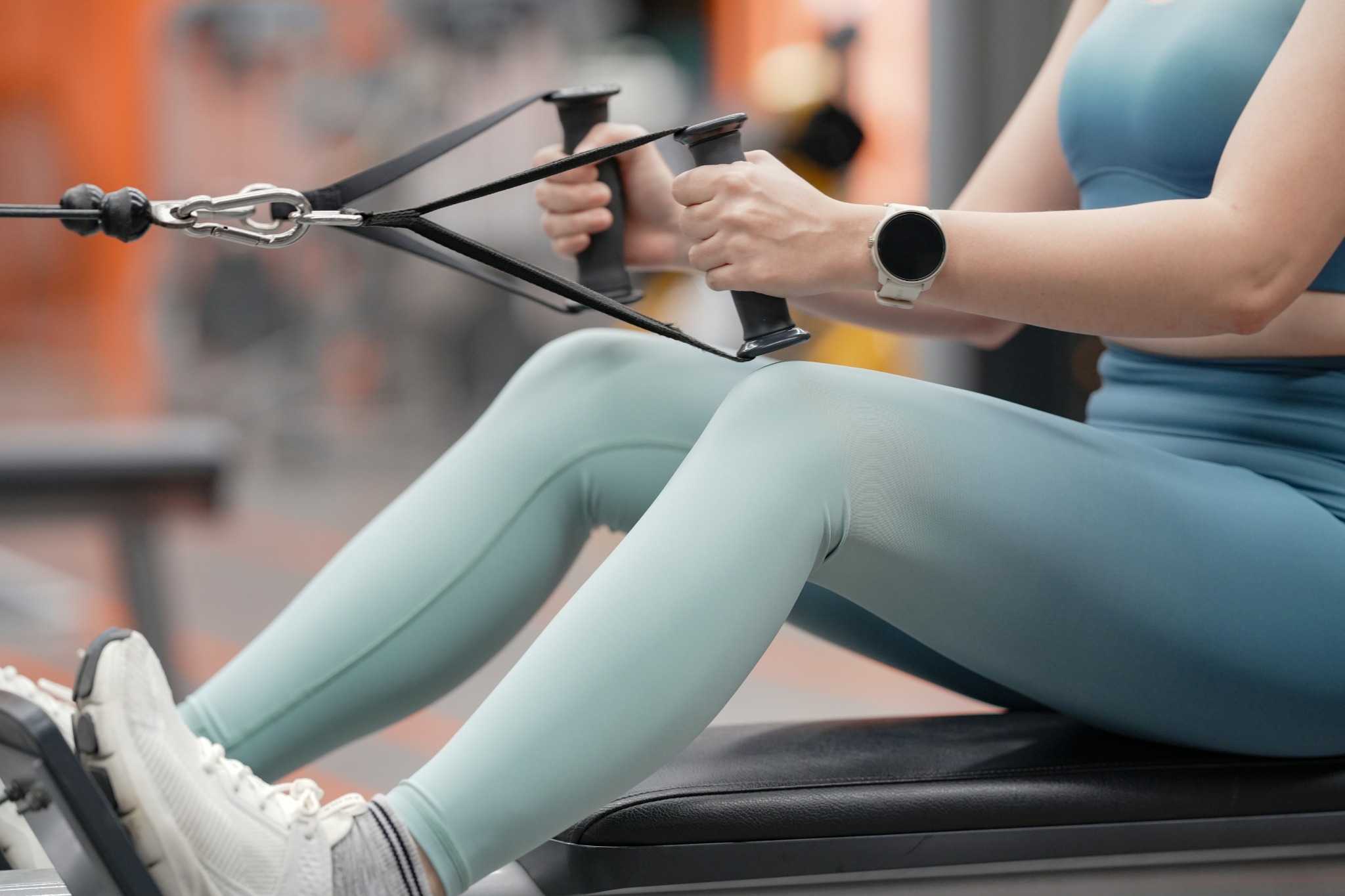
What Is a Pedicure: Everything You Need To Know
Taking care of your feet is more than just a luxury—it’s essential for maintaining foot health. Many of us spend hours on our feet, whether
Our unique approach enables us to look beneath the surface of the skin and simulate your results prior to treatment. Learn more >
Results simulator now available. Learn more >

The best way to get faster at rowing involves a blend of strategic training, mental resilience, and refined technique. Improving your rowing speed efficiently demands not only physical endurance but also a shift in mindset and consistent practice.
In this guide, you’ll discover practical tips and expert insights to boost your performance, tackle rowing challenges, and enjoy steady progress on your journey to becoming a faster, more efficient rower.
Rowing is a demanding sport, requiring intense focus and physical output. The discomfort often felt during high-intensity sessions is entirely natural, and it’s also one of the most effective indicators of progress.
Building speed involves becoming comfortable with these challenging feelings and learning to row through them to reach your potential.
Recognising discomfort as part of the rowing process is vital to rowing faster. By changing your outlook on physical strain, you can train your mind to see discomfort as growth rather than a barrier.
The best way to get faster at rowing is not only about perfecting physical technique but also about cultivating a mindset that can endure and thrive under pressure.
Top rowers employ mental strategies that allow them to keep pushing through intense sessions, focusing on their goals despite physical discomfort.
Here are the key mindset strategies for rowing speed:
Instead of focusing on the entire race or distance, break it down into manageable segments, such as every 100 metres. Achieving these smaller goals can steadily increase confidence and make each session feel more attainable.
With each milestone, you’ll gain a sense of achievement, helping you track your progress and stay motivated to keep pushing forward.
Motivation often comes from within. Remind yourself why you’re rowing—whether it’s to boost fitness, achieve a personal best, or build resilience.
By reinforcing your purpose, positive self-talk can help you maintain focus and overcome challenging moments, turning each stroke into a step towards your goal.
Mentally picture yourself rowing with perfect form and reaching your target speed. Visualising success can boost your focus and energy, helping you stay determined when you face obstacles. This technique encourages a strong mind-body connection, reinforcing your ability to meet and surpass each challenge that arises.
Perfecting your technique is another critical part of the best way to get faster at rowing efficiently. Rowing faster does not necessarily mean expending more energy; instead, it’s about using your energy more effectively.
Small adjustments to your form can make each stroke smoother, helping you increase speed while avoiding wasted effort.
Improving each of these phases can help you row faster and more efficiently, with less strain on your body. Focus on one element at a time to master each phase individually before combining them for a smooth, effective stroke.
Physical stamina is just as crucial as technique in achieving faster rowing times. Developing endurance will enable you to row longer distances at higher speeds without fatiguing as quickly.
Here are some of the best methods to build your stamina for rowing.
Begin with distances that feel manageable, then gradually increase them as your stamina builds. This progressive approach allows your body to adapt to the demands of high-intensity rowing over longer periods.
Starting small and adding distance over time helps prevent burnout and reduces the risk of injury, creating a solid foundation for enduring faster rowing sessions.
Incorporate intervals by alternating between bursts of high-intensity rowing and slower-paced recovery rows.
For instance, row at full effort for 30 seconds, then ease up for 60 seconds. Repeat this cycle several times within a session. This method, known as interval training, builds both speed and stamina, conditioning your body to generate power and sustain it over time.
Adding strength exercises specifically targeting muscles used in rowing—such as the legs, back, and core—is essential.
Exercises like squats, lunges, and deadlifts help develop the power needed for efficient, powerful strokes. Building strength in these areas not only improves rowing performance but also helps prevent strain and injury.
Regular rowing practice is key for building endurance. Consistency trains your body to adapt to higher intensities and longer durations, gradually improving stamina. Over time, regular rowing conditions your body, allowing you to row faster and further with less fatigue.
Planning a weekly training schedule allows you to focus on all aspects of rowing while balancing intensity with recovery. Here’s a sample schedule to guide your training for speed improvement.
| Day | Training Type | Details |
| Monday | Endurance Row | Row at a moderate pace for 20–30 minutes to build consistency. |
| Tuesday | Strength Training | Perform exercises such as squats and lunges to strengthen your legs and core. |
| Wednesday | Interval Training | Row at full speed for 1 minute, followed by 2 minutes of recovery. Aim for 10 cycles. |
| Thursday | Light Cardio or Rest | A light jog or gentle stretching keeps muscles active while allowing for recovery. |
| Friday | Technique Drills | Practise each phase of the rowing stroke, focusing on form and precision. |
| Saturday | Long Row | Row for 40 minutes at a moderate pace to build endurance. |
| Sunday | Rest | Take a full rest day to allow for complete muscle recovery. |
Following a structured training schedule can help you stay on track, but don’t forget the importance of rest and relaxation. Taking a break at a Sydney cosmetic clinic can provide a soothing environment with therapeutic benefits, perfect for unwinding after a week of intense rowing.
Proper nutrition is essential for any athlete, especially those striving for high-intensity performance in rowing. The right foods provide energy, aid muscle recovery, and help you maintain peak performance levels.
After a high-intensity rowing session, treating yourself to a facial Bondi treatment can be an excellent way to rejuvenate, helping you feel refreshed and ready for your next challenge.
Recovery is a key component of any successful rowing programme. Intense rowing can place stress on muscles and joints, so taking time to rest and recuperate is essential to avoid overtraining and burnout.
For more comprehensive recovery solutions, the Sydney cosmetic clinic offers treatments designed to support muscle recovery and overall skin health and treatments, helping you look and feel your best after each intense session.
Monitoring your progress keeps you motivated and allows you to see improvements over time. Tracking your journey is also an excellent way to identify areas that may need additional focus or adjustments.
Quality equipment can make a significant difference in your rowing experience. From indoor rowing machines to gear that improves comfort, investing in quality equipment can help you row more effectively.
For rowers training outdoors, it’s important to stay protected from prolonged sun exposure. Alongside quality gear, scheduling regular skin checks at Bondi Junction Skin Cancer Clinic can be beneficial for long-term skin health.
Rowing faster isn’t just about strength; it also takes mental grit, good technique, and regular practice.
By getting comfortable with the challenge, fine-tuning your form, and staying consistent, you’ll see steady improvement. The best way to get faster at rowing efficiently is built on resilience, focus, and commitment.
Discover the best way to get faster at rowing with dedication and care. After training hard, reward yourself with revitalising cosmetic treatments at Sydney Cosmetic Clinic to support recovery and boost confidence—helping you look and feel your best as you pursue new rowing goals.

Taking care of your feet is more than just a luxury—it’s essential for maintaining foot health. Many of us spend hours on our feet, whether

Micropigmentation permanent makeup has emerged as a highly sought-after cosmetic treatment designed to offer long-lasting, natural improvements without the hassle of daily makeup application. This

Understanding how much protein you can absorb at once is key to optimising your diet, whether you’re trying to build muscle, manage your weight, or
"*" indicates required fields
Excellent, we are always excited to meet a new face or to welcome back a familiar one. Contact us in the way that best works for you!
© 2022 Bondi Junction Cosmetic Clinic. All rights reserved.
Enter your details and we will contact you within 24 hrs.
"*" indicates required fields